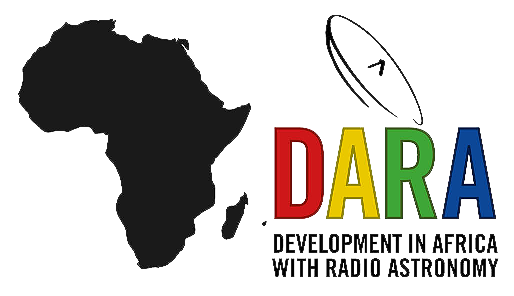Simulating African VLBI Network Observations
NOTE THAT THIS IS CURRENTLY OFFLINE
Using the Observing Simulator Tool (OST)
We have provided an AVN/EVN version of the Observing Simulator Tool (OST; credit A. Avison). This takes an input image (not possible to upload, but there are two suitable library images plus a point) and simulates and images a measurement set for either the AVN (incl. phased MeerKAT) or the EVN (incl. Asia and HartRAO) or both.
The two images are the protostellar cluster from the ALMA OST, and a radio galaxy kindly provided by Robert Laing, scaled to a suitable resolution. The galaxy has N-S jets, so good for showing how the AVN helps. You can download the fits images and tweak the look-up table in the CASA viewer to bring up details or compare images on the same colour scale.
To use the AVN OST follow the link: http://almaost.jb.man.ac.uk/AVN
Tips:
- Chose Dec around +05 - +15 to get all antennas up and decent uv coverage
- Many options are hard-wired, e.g. C-band only.
- 3 hr is an OK time on source, with a 60 sec phase referencing cycle to spread it out.
- I have tried 1 Jy peak, mostly images are dynamic range limited. Robust seems to work slightly better.
- Make cleaned images natural or robust.
- The predicted noise is tiny (microJy) but the images are very very dynamic-range limited as you'd expect.
Using the CASA simulation tools
The CASA software package provides simulator tools in order to generate synthetic measurement sets using different arrays. As the OST is limited, you may want to use the CASA simulator instead which is more flexible albeit more involved. A good guide on how to use the simulator tools is provided by NRAO and can be found here.
To use the CASA simobserve task for the AVN, you will require config files to set the positions of the arrays. We have provided example config files the AVN, EVN & AVN+EVN config files are located below. These can be used as a direct input to the antennalist parameter in thesimobserve task. WARNING: The real antennas also have feed axis offsets therefore the simulator can be used for investigating the effects of uv coverage but not for quantitative comparison (AMSR). Please note also that the antenna positions and sensitivities used for the African antennas (except HartRAO) are very very approximate indeed, and for all antennas only rough values of the SEFD are used. They may not all even have 5 GHz receivers.
- AVN: avn.cfg
- EVN: evn.cfg
- EVN & AVN: evn_and_avn.cfg
